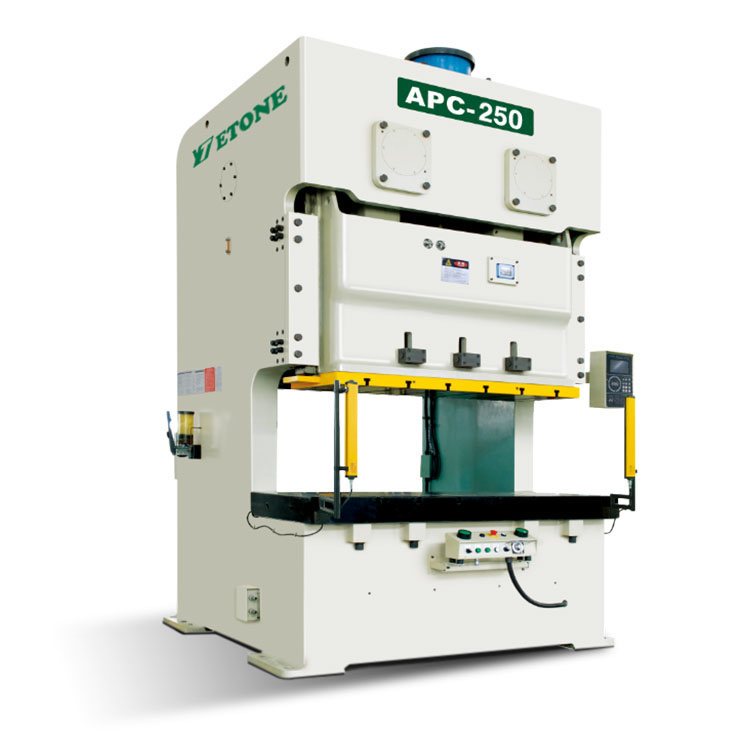The double crank press is a common mechanical equipment, widely used in metal stamping, forming, die casting and other fields. Its main features and functions are as follows:
1. Features of the double crank press
The double crank press adopts a two-crank structure, which converts the rotational motion of the crank into linear motion, drives the slider to move up and down, and completes the stamping or forming work. Compared with the single crank press, the double crank structure can provide a more stable pressure output.
The double crank structure can achieve greater impact force and pressure output, and is suitable for work that requires greater forming force. Through the synergistic effect of the two cranks, the pressure output is more uniform, and some thicker or harder materials can be processed.
The double crank press reduces the vibration and impact of the machine through the joint action of the double crank, ensuring that the machine can operate stably under high-frequency stamping work and extending the service life of the equipment.
The double crank press can quickly complete the working stroke, especially in high-frequency and large-scale production, and can provide higher production efficiency and stability to meet the needs of automated production lines.
Compared with other types of presses, the double crank press has a more compact structure, occupies less space at the same tonnage, and is easy to install and use in a factory environment with limited space.
The double crank system effectively reduces the vibration and noise during work through the linkage of two cranks, ensuring the smooth operation of the machine, and is particularly suitable for stamping and forming processes with high precision requirements.
The double crank press is suitable for a variety of different forming processes, such as stamping, shearing, die casting, etc., and can process various metal materials, especially for thicker and harder materials.
2. The role of the double crank press
The double crank press is widely used in stamping and forming processes of metal sheets. It can press metal materials into the desired shape, and common applications include automotive parts, home appliance housings, metal sheet forming and other fields.
In precision mold manufacturing, the double crank press is used for high-precision stamping, shearing and other operations. Due to its high stability and large pressure output, it can meet the manufacturing requirements of high-precision parts.
The double crank press is often used in processes such as shearing and trimming of metal materials. For example, it can be used to cut metal plates, trim the edges of stamped parts, and ensure the accuracy and size of the product.
Double crank presses are suitable for use in large-scale production due to their efficient and stable working characteristics. They can complete a large number of identical or similar stamping jobs in a short time, and are particularly suitable for automated production lines.
Double crank presses can provide high pressure in forging and die-casting processes, and are particularly suitable for the forming and casting of high-strength materials. It is widely used in aerospace, automotive industry, and other industries that require strong pressure support.
The high precision and stability of double crank presses make them suitable for manufacturing parts with complex shapes, such as various precision metal products, to meet the industry's requirements for part shape and dimensional accuracy.
Double crank presses, due to their unique double crank design, can provide large and stable impact force and pressure, and are suitable for large-scale, high-precision production tasks. It is widely used in many fields such as metal stamping, mold manufacturing, forging molding, etc., and can efficiently and stably complete large-scale production, and is particularly suitable for processes that require high precision and high pressure output.


